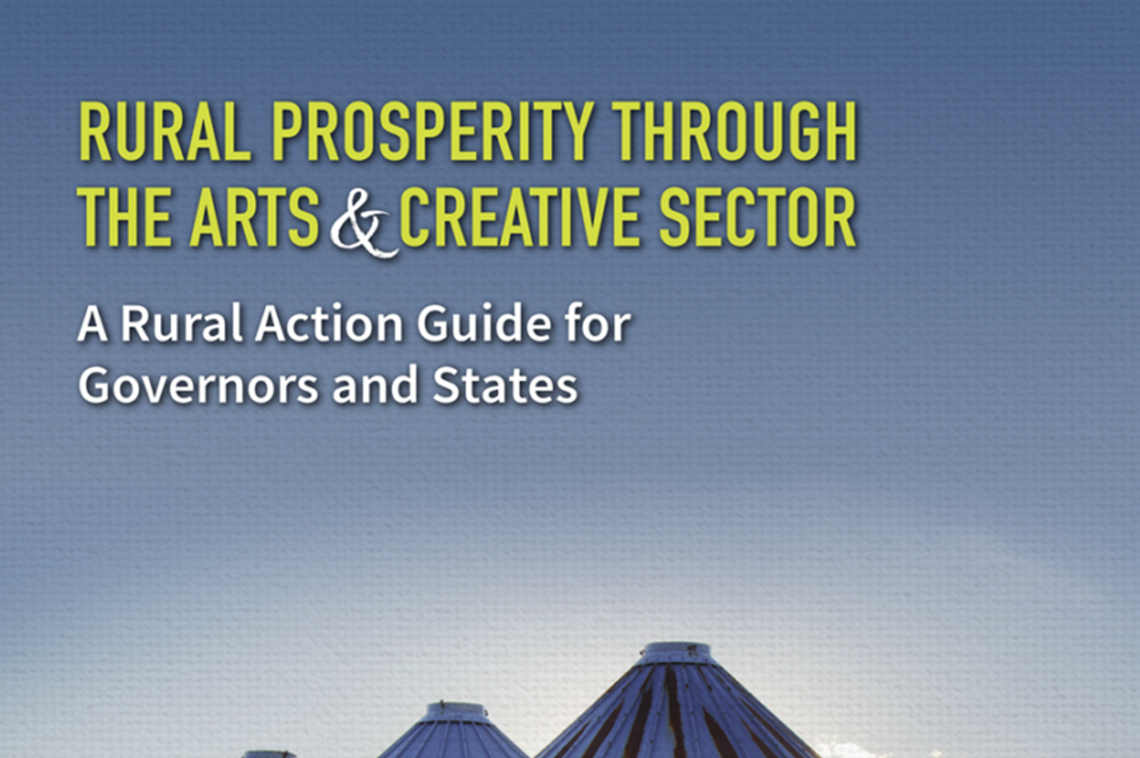
Struggling rural communities have found new life through smart public policies that boost the creative sector, the National Governors Association said in a report and action guide that is the product of more than a year of research across a wide swath of the country.
Rural Prosperity through the Arts and Creative Sector: A Rural Action Guide for Governors and States synthesizes a growing body of research showing how arts-based economic development — already responsible for more than 600,000 jobs in rural states — can help communities to thrive. The guide grew out of a collaborative initiative between the NGA Center for Best Practices, the National Endowment for the Arts and the National Assembly of State Arts Agencies. The NGA undertook this project to help states address the urgent challenges facing rural communities, many of which are struggling with high unemployment rates, manufacturing declines and outmigration.
“Governors need fresh, results-oriented approaches that boost economic opportunities, create jobs, retain young people and preserve a great quality of life in our small towns and undeveloped areas,” said Scott D. Pattison, NGA CEO and executive director. “Our analysis indicates that leadership from governors and smart public policies can help the creative sector realize its potential as a catalyst of growth and pride in rural communities.”
According to the guide, when rural regions lose their traditional industries, they can capitalize on their creative assets to reimagine — and realize — a new future. Drawing on quantitative data, an extensive scan of field practices and insights from a national panel of rural development experts, the guide offers a five-point policy framework and 27 policy action steps, illustrated by 100 examples of how arts-based strategies have worked in diverse geographic settings.
“From Appalachian coal communities to our agricultural heartland to the mountain west, the examples in this action guide reveal how the arts and culture are central to rural vitality,” said Mary Anne Carter, acting chairman of the National Endowment for the Arts. “Creative placemaking opens economic doors for rural communities. The most recent data produced by the Bureau of Economic Analysis and the Arts Endowment show that arts and cultural industries contributed $67.5 billion and employed more than 628,000 workers in our country’s most rural states.”
The guide points to the arts as a key ingredient in comprehensive rural development efforts, noting that the creative sector complements other industries and can boost the efficacy of state economic development policies, partnerships and plans.
“Including the arts in rural development efforts enriches the policies states can bring to bear in this crucial policy domain,” said Pam Breaux, president and CEO of the National Assembly of State Arts Agencies. “The resulting strategies have a unique local resonance. Rural residents love their communities and hold deep attachments to the places they call home. The arts and culture mobilize that pride and harness the optimism of rural America.”
Arts and cultural sectors add to the US gross domestic product (GDP) in the billions, employ nearly 5 million workers and add value to the U.S. economy (more than mining, agriculture, construction and transportation do).
Community development efforts in cities, towns and rural places across the country have demonstrated that artists, designers and cultural organizations can play an essential role in realizing community-driven transformation. Community development strategies that integrate the arts and culture are better equipped to draw on and support existing community assets, preserve and enhance the authentic character of place and ensure equitable outcomes for local stakeholders. Through creative placemaking, the arts and culture can strengthen communities by helping revitalize local economies, provide rich engagement for youth, advance educational outcomes, create spaces and places where people want to be, facilitate authentic engagement in community planning, reimagine uses for vacant properties and improve quality of life for existing residents.
There are a number of Artplace funded projects in the guide, including Appalshop in Kentucky whose work centers on cultural organizing, place-based media and arts and education to document the life, celebrate the culture and voice the concerns of people living in Appalachia and rural America generally. Also included as a great example is the National Cowboy Poetry Gathering in Elko which has been drawing ranchers and visitors annually since the 1980’s for a week of poetry, music, dancing, hands-on workshops, exhibits, conversations, food and fellowship. The Rolling Rez Arts mobile unit serves as a studio, classroom, bank and marketplace for the Pine Ridge Indian Reservation in South Dakota and the Wormfarm Institute’s FarmArt DTour in Sauk County, Wisconsin is also featured.
Rural Prosperity through the Arts and Creative Sector was produced by the NGA through a cooperative agreement with the National Endowment for the Arts in collaboration with the National Assembly of State Arts Agencies (NASAA). Related resources can be found on the NGA website, research from the National Endowment for the Arts and NASAA’s rural prosperity web page.
The partner organizations are using the hashtag #ruralarts on social media.





